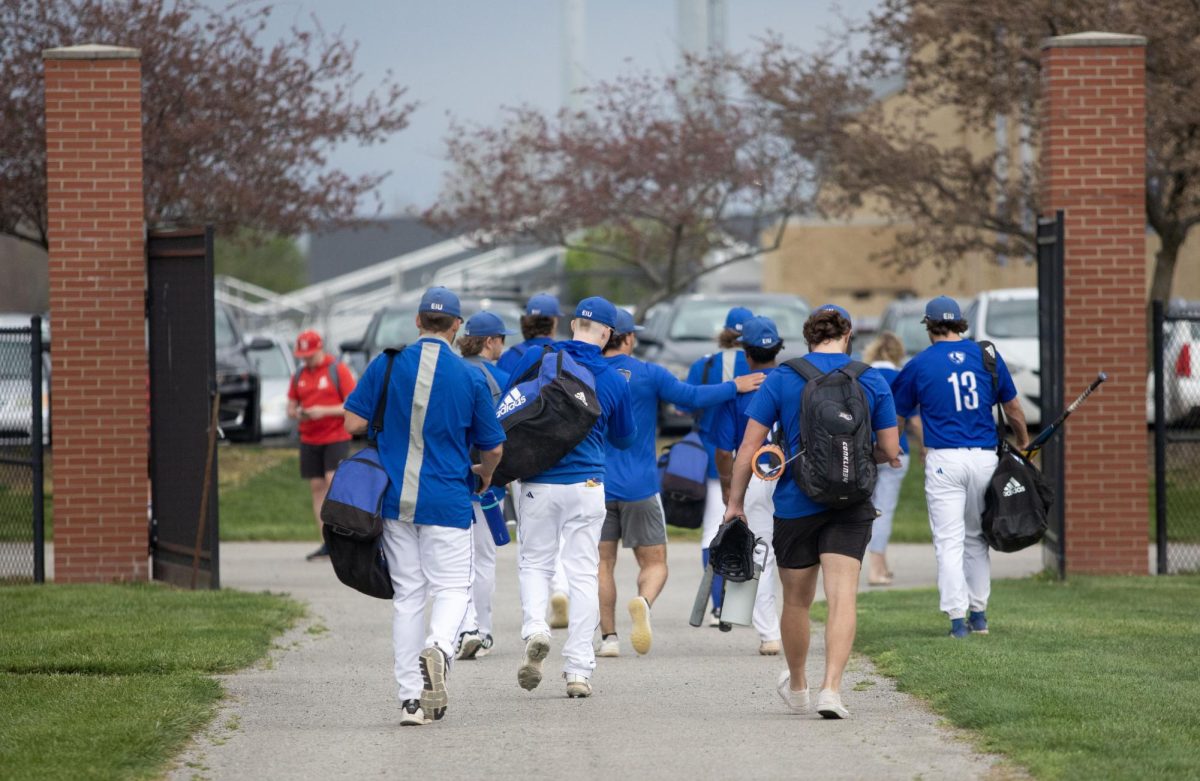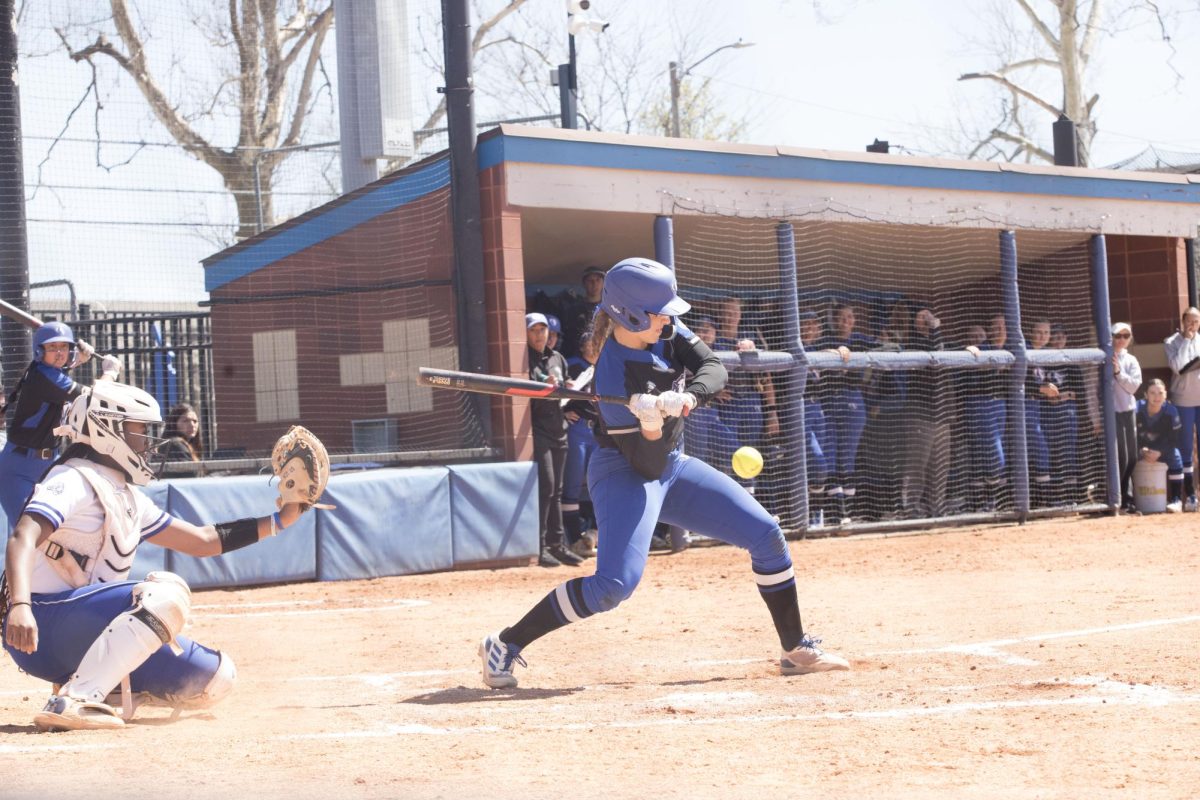Cities sound off on decibel meters
DeKalb, home of Northern Illinois University, has successfully used a decibel meter system for several years to issue citations for loud house parties, a policy the city and some Eastern students are looking to implement at Charleston.
Lt. Dan Gerace of the DeKalb Police Department said Wednesday DeKalb has used decibel meters to measure the noise of house parties for a long time and it works well.
DeKalb city ordinance states decibel levels cannot be over 65 before 11 p.m. and they cannot be over 60 after 11 p.m., Gerace said. Measurements are taken from the property line of the resident making the complaint, he said.
Charleston residents and students are working through the Noise Committee to institute a similar program; however, further testing and planning needs to be completed before the system is implemented as a means of deterring loud house parties.
In DeKalb, if decibels measure over the minimum, a warning or citation will be issued, and officers have the decision of which to issue, Gerace said. In addition, action does not take place until a complaint is called in, he said.
Depending on the time of year, Gerace said the complaints on house parities are common, especially as graduation approaches.
Distance Measurement
Four other college towns in Illinois prefer to use distance measurement for noise problems rather than Charleston’s proposed decibel meter system.
Carbondale and Normal take action on noise complaints if it is heard 50 feet from the residence and in Champaign and Macomb noise cannot be heard beyond property lines.
In Carbondale, home to Southern Illinois University, if amplified sound is heard more then 50 feet away after 10 p.m. a warning will be issued, Dan Reed, Carbondale Police Department’s public information officer, said Wednesday. Any additional warnings result in citations.
He also said the decibel meter system would be a good way to testify the noise level.
“That sounds pretty cool,” he said.
Western Illinois University’s Macomb allows for one warning per semester, unless noise is excessive or residents will not cooperate, Chief Bill Hedeen of the Macomb Police Department said Wednesday. And sometimes, the Macomb police will allow two warnings per semester if the residents have not been too disruptive.
Macomb also looked into the possibilities of a decibel meter system several years ago, but opted instead for distance measurement because it allowed for more discretion, Hedeen said.
Normal, where Illinois State University is located, exercises this same procedure, but issues two written warnings per address per semester, Lt. Mark Kotte, community services coordinator for the Normal Police Department, said Wednesday.
Both Champaign, home to the University of Illinois, and Normal have a student party patrol that usually patrols and responds to loud party complaints in the cities.
Champaign tried a warning system several years ago, but it did not work out, Scott Friedlein, sergeant in charge of alcohol enforcement and special events at Champaign Police Department said Wednesday. The police do not generally respond to the first complaint, but will issue citations on the second complaint, Friedlein said.
He said the party patrol system has reduced calls for service at the department.
The student party patrol system has the same effects for Normal, Kotte said.
“I think it’s great,” he said. “We’ve been doing it for a long time.”
Though Normal elected to go with distance as a basis for noise complaints, Kotte said the decibel meter system should be a good route as well.
Charleston’s plan
Though specifics are yet to be determined, the newly-formed Charleston Noise Committee last week decided to look into a decibel meter system to measure noise levels and start a warning system before tickets would be written.
The problem with noise is that in Charleston the police cannot do anything about the noise until a complaint is called in, Charleston Assistant Police Chief Cunningham said Tuesday.
In Carbondale, officers on patrol can take action on noise before a complaint is received, Reed said. And Champaign officers can act before a complaint if a safety concern is observed, Friedlein said.
Consistency has often been a problem in Charleston with noise issues because of the restrictions, Charleston Mayor Dan Cougill said Monday. The new system will make it more uniform.
“That will help fix some of the consistency issue,” Cougill said.
Right now, when police officers receive a noise complaint, they have some discretion on whether to issue a ticket or not, Cunningham said. It depends on the type of noise and time of day.
Noise complaints are pretty regular in Charleston, Cunningham said, but a majority occur in the spring and fall.
“It depends on the time of year,” he said.
The worst areas are Sixth, Seventh and Ninth streets, Cougill said, with the worst usually being Seventh Street.
Reasons this has become an issue lately in Charleston is a shift in neighbors, Cougill said. More families with children are moving to the affected area and parties have gotten louder and tend to go on longer, he said.
Cougill said he has tried to get input from other communities on how this kind of noise is dealt with, but has not had luck getting a response.
“I know they’ve got issues,” he said.
After spring break, the committee will set up some situations to get a feel for noise levels, and they will also ride along with police officers, City Planner Jeff Finley said Tuesday.
Determining acceptable noise levels will be somewhat challenging because of different types of land, sound and frequencies, Finley said.
Guidelines of the Environmental Protection Agency set out six frequency ranges, Finley said. For these there are three types of land; class A which is residential, class B which is recreational and class C which is industrial, and different ranges apply to those zones, he said.
Sound ranges from about 31.5 hertz to 8,000 hertz, with nine total frequency ranges represented, Finley said. The human voice clocks in at about 1,000 hertz depending on voice octaves while music covers a larger range depending on octaves, he said.
Further division on decibel meters, which is weighing in on what type of decibel meter the city will purchase, distinguishes between voice, music and industrial frequencies, Finley said.
One other factor determining noise levels include the time of day, he said.
All of these factors will go into selecting a decibel meter for these purposes, Finley said.
Total cost for a decibel meter and calibration equipment for the purposes of house party readings can range from $300 to $1,000, Cougill said. It also will not be too complicated to use.
“For what we’re doing, it’s fairly easy,” Cougill said.
A meter will be ordered within the next few days for the field tests, and may or may not be the one used permanently, he said.
End results to these experiments are not yet determined, Cougill said. He does not know if an ordinance or other action will result, nor is the target date decided. These variables are dependent on results of the tests, he said.





































































